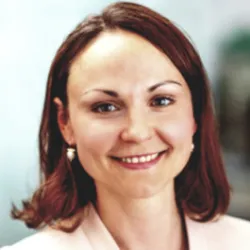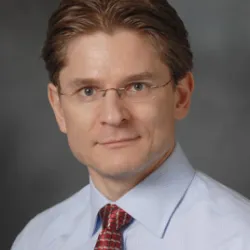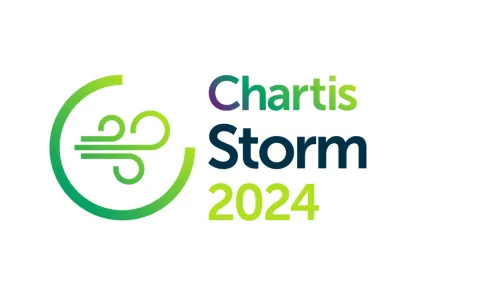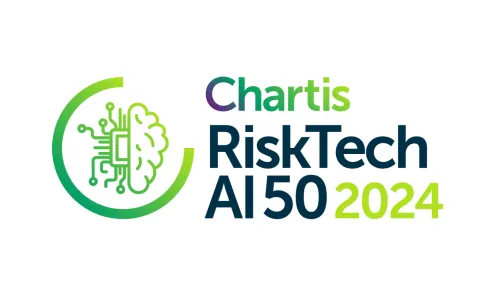Storm 2024
The STORM event is a deep dive into the evolving world of QuantTech, Insurance Analytics, and more. This event features discussions on industry trends and unveils the leaders from the STORM report, celebrating innovation in financial technology.

Chartis STORM 2024
Forecasting Innovation: The Chartis STORM Experience
June 12-13, 2024 - 9am EDT / 2pm GMT
About the event
We are proud to invite you to STORM 2024 taking place on June 12th and 13th, 2024. This event will provide an in-depth exploration of the transformative trends shaping QuantTech, Insurance Analytics, Retail Finance Analytics and Buyside Risk. This event features discussions on industry trends and unveils the leaders from the Chartis Research STORM report, celebrating innovation in financial technology.
- June 12th: Join us for QuantTech50 and Buyside Risk50, exploring cross-sectional capabilities, market dynamics, and portfolio management. We will also unveil the leading vendors revolutionizing these sectors with their unparalleled innovations.
- June 13th: Introducing Insurance Analytics50 and Retail Finance Analytics50, from risk management in insurance to groundbreaking advancements in retail finance. Through the day we will celebrate the vendors at the forefront of these fields, setting new benchmarks of excellence.
If you're a professional in finance or technology, particularly in quantitative analysis or fraud detection, this event is designed with you in mind. Discover cutting-edge trends and network with industry trailblazers.
Immerse yourself in the future of finance at STORM 2024. Watch on-demand today.
Advisory Board

Alain Robert-Dautun
Chief Operating Officer
Sycomore Asset Management
Alain Robert-Dautun has over 20 years of experience in the financial markets and asset management, including in hedge funds investment and risk management. Before joining Sycomore Asset Management in 2006 as head of risk management, he was senior investment analyst and member of the investment team at Allianz Alternative Asset Management, before which, he was portfolio manager for a long short equity fund for CPR Asset Management. Previously, Robert-Dautun has served as head of new products development for JP Morgan, head of asset allocation for State Street Global Advisors and quantitative analyst for Sinopia Asset Management. He holds a master's degree in statistics from the Paris Institute of Statistics, is a CFA charterholder and is member of the Institute of Actuaries. Robert-Dautun is a member of the risk commission for the French Asset Management Association.

Blanka Horvath
Associate Professor in Mathematical and Computational Finance
University of Oxford
Blanka Horvath is a Lecturer in Financial Mathematics at King’s College London as well as a Honorary Lecturer at Imperial College London and a researcher at The Alan Turing Institute, where she is co-lead of the Machine Learning in Finance theme. Blanka holds a PhD in Financial Mathematics from ETH Zurich, a postgraduate Diplom in pure Mathematics from the University of Bonn and an MSc in Economics from the University of Hong Kong. In her latest research she focusses on non-Markovian models of nancial markets such as Rough Volatility models as well as modern DNN- based market generators. Prior to her position at King’s College, Blanka worked at JP Morgan on the re nements of the Deep Hedging programme and the development of generative market simulation models. Her work on DNN-based calibration of Rough Volatility models was awarded the Rising Star Award 2020 of Risk magazine.

Chris Olson
Head of Operational Risk Management
MassMutual

Eugene Seo
Head of Equity Trading
Nordea Asset Management
Eugene Seo is currently head of equity trading at Nordea Asset Management. His main areas of focus are cash and electronic equities.
He is also very active in Diversity and Inclusion at Nordea. Prior to joining Nordea, Eugene was head of execution at Findlay Park Partners based in London and an equity trader at First State Investments.

Iancu Daramus
Former director, climate-aligned investing
Fulcrum Asset Management LLP
Iancu is a sustainable investment specialist, with a decade of experience setting strategy and developing investment solutions in senior asset management roles, including at Legal and General Investment Management and Fulcrum Asset Management, and of influencing some of the world’s largest companies through stewardship. Iancu researches, speaks and publishes regularly on climate risk and the energy transition, including as a lead author of the go-to industry qualification, the CFA Certificate in ESG Investing, and of the forthcoming book Green herrings.
Described as "a committed sustainability advocate with strong credentials” (Investment Week), Iancu won the "Rising Star" award at the 2022 Sustainable Investment Awards, and was selected on Brummell Magazine's "Ones to Watch" 2023 list for "30 under 40" in the City.

Ioana Boier
Senior Principal Solutions Architect, Applied Researcher – Financial Services
NVIDIA
Ioana Boier is a senior principal solutions architect at NVIDIA. Her background is in Quantitative Finance and Computer Science research. Prior to joining NVIDIA, she was the head of Quantitative Portfolio Solutions at Alphadyne Asset Management, and led research teams at Citadel LLC, BNP Paribas, and IBM T.J. Watson Research. She has a PhD in Computer Science from Purdue University and is the author of multiple peer-reviewed publications, patents, and the winner of several awards for applied research delivered into products.

Luca Capriotti
Managing Director - Global Head Quantitative Strategies, Credit
Credit Suisse
Luca Capriotti is a Managing Director at Credit Suisse, based in London, where he works in Quantitative Strategies and he is responsible for Credit Products in Europe, and globally for Corporate Bank and Treasury. Previous to this role, he was US head of Quantitative Strategies Global Credit Products, he has worked in Credit and Commodities Exotics in New York and London and in the cross-asset modeling R&D group of GMAG in the London office.
Luca is also visiting professor at the Department of Mathematics at University College London. His current research interests are in the fields of Machine Learning, Algorithmic Trading, Credit Models and Computational Finance, with a focus on applications of Adjoint Algorithmic Differentiation (AAD) for which he holds a US Patent.
Luca gives regularly gives seminars and courses worldwide. He has served as supervisor and external examiner for Master and PhD programs and as referee for several scientific publications .
Prior to working in Finance, Luca was a researcher at the Kavli Institute for Theoretical Physics, Santa Barbara, California, working in the field of High Temperature Superconductivity and Quantum Monte Carlo methods for Condensed Matter systems.
Luca holds a M.S. cum laude in General Physics from University of Florence (1996), and an M.Phil. and Ph.D. cum laude in Condensed Matter Theory, from the International School for Advanced Studies, Trieste (2000).

Michel Fournier
VP and Chief Risk Officer
Beneva
Michel Fournier is Vice President and Chief Risk Officer for Beneva. He is responsible for Risk Management across the organization.
Prior to his appointment at Beneva, he was Head of Risk Management and then Head of Hedging at National Life Group, Head of Global Equity Risks at Manulife and Head of Hedging for VA Europe at ING Group.
Michel has an MBA-Finance and a BSc in Actuarial Science both from Laval University. He also holds the titles of ASA (from the Society of Actuaries), CFA (Chartered Financial Analyst) and FRM (Financial Risk Manager).

Petter Kolm
Clinical Full Professor of Mathematics
Courant Institute of Mathematical Sciences
Petter’s research interests include quantitative trading strategies, delegated portfolio management, financial econometrics, risk management, and optimal portfolio strategies.
He is a member of the editorial board of the Journal of Portfolio Management. Previously, Petter worked in the Quantitative Strategies Group at Goldman Sachs Asset Management where his responsibilities included researching and developing new quantitative investment strategies for the group’s hedge fund.
Petter coauthored the books Financial Modeling of the Equity Market: From CAPM to Cointegration (Wiley, 2006), Trends in Quantitative Finance (CFA Research Institute, 2006), and Robust Portfolio Management and Optimization (Wiley, 2007). He holds a doctorate in mathematics from Yale University, an M.Phil. in applied mathematics from the Royal Institute of Technology in Stockholm, and an M.S. in mathematics from ETH Zurich.

Sidhartha Dash
Chief Researcher
Chartis Research
Sid is a research director at Chartis Research with more than 20 years of experience in the financial, energy, and commodities markets in various functions across the trade and software development lifecycles. He has held various roles in product development, trading, risk management, software development, and consulting in banks, hedge funds, and risk advisory and software firms, including Standard Chartered Bank, TCG Group, HCL, and Cognizant.
Sid’s specific areas of interest and research include risk data, model risk management, quantitative models in illiquid markets, high-performance analytics, energy and commodity trading risk, market structure design, new computational models, and the use of innovative mathematical methods in various emerging areas of risk management. He has an MBA from the Indian Institute of Management and is a qualified Chartered Alternative Investment Analyst CAIA, Financial Risk Manager (FRM), Energy Risk Professional (ERP), Member of GARP and CIPM from the CFA Institute.

Wim Schoutens
Professor
University of Leuven
Wim Schoutens is a quantitative finance professor at the University of Leuven, Belgium.
He has extensive practical experience of model implementation and validation. He is well known for his consulting work with the banking industry and national and supra-national institutions. He is an independent expert advisor to the European Commission, has worked for the IMF and is the author of several books on quantitative finance.
His latest books, co-authored with Dilip Madan, are about the brand new theory of conic finance.
He is also a member of different editorial Boards of international finance journals. Wim is also a founding partner of RiskConcile, a fintech company with roots within the University of Leuven.
He likes arbitrages, politically incorrect statements and making jam.

Uwe Naumann
Professor for Computer Science
RWTH Aachen University
Uwe Naumann is the author of the popular text book on (Adjoint) Algorithmic Differentiation (AAD) titled "The Art of Differentiating Computer Programs" and published by SIAM in 2012. He holds a Ph.D. in Applied Mathematics / Scientific Computing from the Technical University Dresden, Germany. Following post-doctoral appointments in France, the UK and the US, he has been a professor for Computer Science at RWTH Aachen University, Germany, since 2004. As a principal scientist of the Numerical Algorithms Group (NAG) Ltd. Uwe has been playing a leading role in the delivery of AAD software and services to a growing number of tier-1 investment banks since 2008.
Get last year's rankings reports
Energy50 2024
The Energy50 2024 report evaluates the key issues and vendors in the energy sector, highlighting transformative technological developments and risks amidst the backdrop of the pandemic, energy transition, and geopolitical changes.
STORM 2024
The STORM 2024 rankings report captures key trends in quant and analytics, including GenAI’s impact, the shift in statistical tools with enhanced compute power, and the emergence of new vendors. This year’s research covers four categories—QuantTech50, RetailFinanceAnalytics50, Insurance Analytics50, and the new BuySideRisk50—each featuring 50 leading vendors.
Financial Crime and Compliance50
The inaugural Financial Crime and Compliance50 (FCC50) report from Chartis Research ranks vendors in the growing FinCrime market, projected to exceed $26 billion. The analysis highlights how tech advances, collaboration, and AI are transforming compliance, with financial institutions seeking cost-effective, impactful solutions.
RiskTechAI 50 2024
The inaugural Chartis RiskTech AI 50 report explores AI’s role in financial services, highlighting key developments and emerging innovations. As AI rapidly evolves, blending with traditional analytics, Chartis identifies the leading companies shaping this dynamic landscape.



